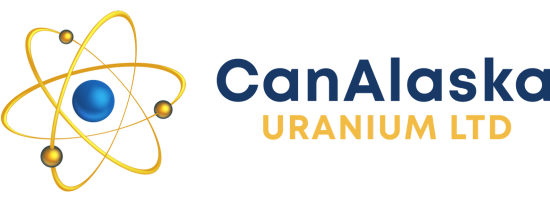Vancouver, Canada, April 13th, 2010 — CanAlaska Uranium Ltd. (CVV — TSX.V) (the “Company”) is pleased to report preliminary information from the winter drill program at the Cree East project (“Project”). The Project is located in the southwestern region of the Athabasca Basin, Saskatchewan. Exploration at the Project is being funded by a consortium of Korean companies comprising Hanwha Corp., Korea Electric Power Corp., Korea Resources Corp. and SK Energy Co. Ltd. (“Korean Consortium”) under a Cdn$19 million option to acquire a 50% ownership interest in the Project. The Company recently received Cdn$4.12 million in funding from the Korean Consortium to support 2010 exploration. The Korean Consortium presently holds a 40.6% ownership interest in the partnership, having contributed a total of Cdn$12.6 million in investment funding.
In 2009, the Korean Consortium planned for an enhanced 2010 exploration program of $5.8 million, divided into winter and summer programs. Logistical considerations allowed four zones (Zones A, D, G and I) to be targeted for 2010 winter drilling. Abnormally warm weather conditions only allowed for fourteen drill holes to be completed in February and March 2010, and priority was given based on accessibility.
Initial information from the winter drill program indicates four areas of basement faulting, hydrothermal alteration, and radioactivity, consistent with Athabasca uranium deposit models. At the commencement of the program, ten separate target zones had been defined by airborne and ground geophysics, along a 5 kilometre trend. Locally, these features exhibited strong electromagnetic responses. The first test drilling in 2008 and 2009 yielded detailed hydrothermal clays, anomalous geochemical response in the sandstone, and local uranium mineralization associated with these systems. The latest Winter 2010 drilling has strongly enhanced the potential for uranium mineralization at Zones A, G and I.
The Company is currently awaiting laboratory assay results from drill core zones with high radiometric counts, as well as the results of the trace element geochemistry for these and surrounding drill holes.Based on the preliminary Winter 2010 results, Zone A warrants additional drilling in the summer of 2010 to precisely test the East-West structural trends, and the associated large fault uplifts (over 50 metres vertical). These fault zones are normally the location of uranium mineralization in typical Athabasca uranium mineralizing environments. Zones G and H are also planned for drill testing during the summer program. Due to their waterborne locations, Zones C, D, and the strong target developed at Zone I will be scheduled for winter drilling in 2011.
Initial Summary of Drilling Results:
Of the four target zones which were drilled this winter, (A, D, G and I), only Zones A and D had been previously drill-tested.
Zone G Target
Zone G is associated with a broad, strong VTEM conductor, on which six historical (1981) drill holes located across the trend to the north demonstrated positive results.
click on map to view in high resolution
The 2010 drilling of Zone G consisted of four new drill holes, which were designed to be part of a 1.4 kilometre long fence running across the anomaly.
The most successful of the four drill holes is drill hole CRE043 at Zone G (see Figure 2). This hole exhibited several zones of strong fracturation and bleaching in the sandstone over 97.5 metres (from 231 metres to the unconformity at 328.5 metres). At this location, the basement rocks also gave indications of uranium mineralization at 402 metres (maximum of 2,224 counts per second on probe), this equates to a radiometric grade of 2.15 metres @ 0.024 eU1. CRE043 also exhibited hematite alteration to 431 metres depth. This particular Zone G location represents a priority target for follow-up summer 2010 drilling.
Zone I Target
Zone I is located between two previously-drilled areas, Zones A and C. Both of these previously-defined zones gave very positive results, with large clay alteration halos and anomalous uranium geochemical halos in previous drilling. The target at Zone I is located near an important East-West offset off the strong regional basement magnetic high detected by the airborne geophysical survey. Drill holes CRE040 and CRE042 tested this target. The holes are 100 metres apart on a NW-SE fence. Each hole intercepted extensive broken and clay altered ground in the overlying sandstone. There are altered basement rocks in both holes, with drill hole CRE042 indicating a 10 metre basement offset at the unconformity. CRE040 intersected graphitic basement, which is typically a favourable host for uranium mineralization. The sandstone was strongly fractured and altered down to 120 metres. Uranium mineralization occurs in drill hole CRE040 just above the unconformity (maximum of 5,068 cps on probe; equating to a radiometric grade of 0.75 metre @ 0.093 % eU1)
Drill hole CRE042 at Zone I shows the similar zones of fracturation and alteration (hematization, bleaching, and desilicification) with rotated blocks in the overlying sandstone, caused by dissolution. This is similar to drill hole CRE040, but this drill hole did not intersect uranium mineralization. The area between these two drill holes and to the NW will require additional drilling in winter 2011 to follow-up the mineralization intersected in drill hole CRE040.

The drilling at Zone D consisted of three new drill holes. It confirmed the location of a West-East 35 metre basement offset. The eastern most drill hole (CRE034) is strongly hematite-altered to the end of the hole. This hematite alteration extends 120 metres into the basement, indicating the presence of strong hydrothermal alteration associated with the fault displacement. Down-hole geophysics data suggests a conductive target NE of this drill hole. This location will require winter conditions for further development.
click on map to view in high resolution
Zone A Target
Zone A showed the most promise for new discovery. Drilling in the winter of 2010 confirmed the general structural pattern to the deformation in the basement rocks and emphasized the relative importance of each structure. A very large basement offset in excess of 50 metres (over 160 feet), along a significant East-West trend has been defined between drill holes CRE008 and CRE016 & 018 (See Figures 3 & 4) and appears to be a very significant target.

The main geological features of interest within Zone A are as follows:
Two sets of fault directions:
NW-SE, parallel to a major magnetic lineament; and
EW or WSW-ENE with the larger offsets (60 to 70 metres)
Two types of structural basement breccia:
Related to a quartzite bearing silicate iron formation with abundant hematization and occasional uranium mineralisation ( In drill hole CRE035; analysis of the probe counts indicate 0.5 metres @ 0.083 % eU1 )
Related to faulting in a graphitic hematized, clay altered calc-silicate-pelite assemblage ( as seen in drill holes CRE008, 009, and 012) along the East-West structure.
Strong brecciation in the overlying sandstone column in drill holes CRE001 and CRE002 suggesting the presence of a second East-West structure.
Strong geochemical anomaly, and as indicated by results of down-hole probing of CRE032, correspond to a radiometric grade of 40 ppm eU1 in the sandstone. This zone is 40 metres above the unconformity, indicating a strong up-flow from the mineralizing event.
After reviewing the preliminary winter 2010 drilling results from the Project, President Peter Dasler commented, ”the multiple targets, which were identified from the airborne surveys on the Cree East project, have now been narrowed to a series of interpretable geological features. These show all of the characteristics of typical Athabasca uranium deposits. The very large fault displacements are likely to host the central portion of each of the postulated mineralizing events. The traces of uranium mineralization in the overlying sandstone, as well in basement drill intercepts, indicate uranium mineralization in the hydrothermal systems. It is very exciting that we now have enough detailed information of the targets to confidently drill test these central cores during the planned summer exploration program.”
Note 1. – In this news release ”Equivalent uranium grades” (eU) have been calculated using a dead-time correction and K factor specific to each natural gamma probe based on calibration runs in the Saskatchewan Research Council test pits. Equivalent uranium grade assumes that in these mineralized intersections, the radioactivity is produced by uranium and that there are only negligible amounts of other radioactive elements present.
The Qualified Person for this news release is Peter G. Dasler, P. Geo.
About CanAlaska Uranium
CANALASKA URANIUM LTD. (CVV — TSX.V, CVVUF — OTCBB, DH7 — Frankfurt) is undertaking uranium exploration in twenty 100%-owned and three optioned uranium projects in Canada’s Athabasca Basin — the “Saudi Arabia of Uranium”. Since September 2004, the Company has aggressively acquired one of the largest land positions in the region, comprising over 2,500,000 acres (10,117 sq. km or 3,906 sq. miles). To-date, CanAlaska has expended over Cdn$60 million exploring its properties and has delineated multiple uranium targets.
CanAlaska’s geological expertise and high exploration profile has attracted the attention of major international strategic partners. Among others, Japanese conglomerate Mitsubishi Corporation has provided the Company C$11 mil. in exploration funding to earn a 50% ownership interest in the West McArthur Project. Exploration of CanAlaska’s Cree East Project is also progressing under a C$19 mil. joint venture with a consortium of Korean companies led by Hanwha Corporation, and comprising Korea Electric Power Corp., Korea Resources Corp. and SK Energy Co, Ltd., in which the Korean Consortium presently holds a 40.6% ownership interest. Other Company projects in the Athabasca Basin scheduled for drill testing during this winter 2010 season include McTavish, Collins Bay Extension and Helmer.
On behalf of the Board of Directors
“Peter Dasler”
Peter Dasler, P. Geo., President & CEO
Contact:
Emil Fung, Director & V.P. – Corp. Dev.
Tel: +1.604.688.3211
Email: info@canalaska.com
The TSX Venture has not reviewed and does not accept responsibility for the adequacy or accuracy of this release: CUSIP# 13708P 10 2. This news release contains certain “Forward-Looking Statements” within the meaning of Section 21E of the United States Securities Exchange Act of 1934, as amended. All statements, other than statements of historical fact, included herein are forward-looking statements that involve various risks and uncertainties. There can be no assurance that such statements will prove to be accurate, and actual results and future events could differ materially from those anticipated in such statements. Important factors that could cause actual results to differ materially from the Company’s expectations are disclosed in the Company’s documents filed from time to time with the British Columbia Securities Commission and the United States Securities & Exchange Commission.

